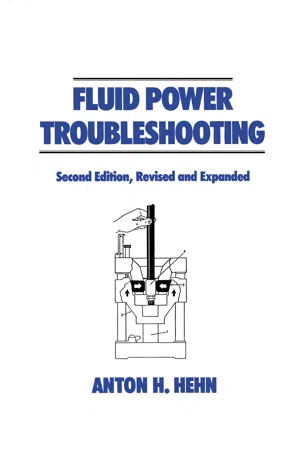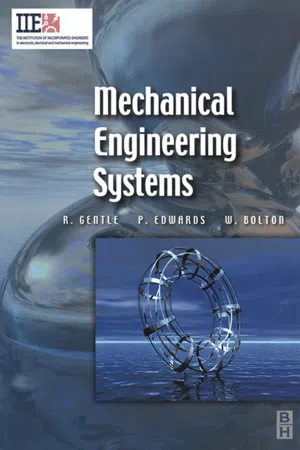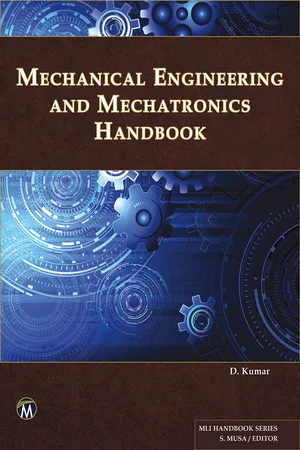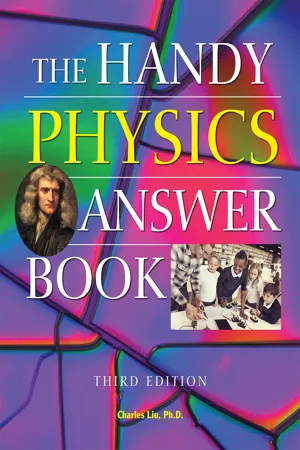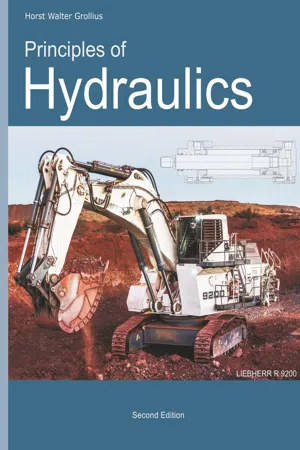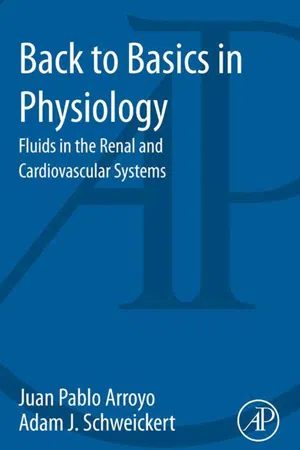Technology & Engineering
Fluid Pressure Force
Fluid pressure force refers to the force exerted by a fluid, such as a liquid or gas, on an object immersed in it. It is determined by the density and depth of the fluid and is perpendicular to the surface of the object. This force is a crucial consideration in various engineering applications, including hydraulic systems and fluid dynamics.
Written by Perlego with AI-assistance
Related key terms
Related key terms
1 of 4
Related key terms
1 of 3
7 Key excerpts on "Fluid Pressure Force"
- eBook - ePub
- Anton Hehn(Author)
- 2021(Publication Date)
- CRC Press(Publisher)
In studying the basic principles of hydraulics, we will be concerned with forces, energy transfer, work, and power. We will relate these to the two fundamental conditions or phenomena that we encounter in a hydraulic system, pressure and flow.Pressure and flow, of course, are interrelated in considering work, energy, and power. On the other hand, each has its own particular job to do. Pressure is responsible for pushing or exerting a force or torque (see Fig. 1.2 ). Flow is responsible for making something move, for causing motion.Pressure is a term used to define how much force is exerted against a specific area. The technical definition of pressure, in fact, is force per unit area. One effect of pressure is the tendency of a fluid which is being squeezed to expand (or exert resistance to compression). A fluid, by definition, is any liquid or any gas (vapor).Figure 1.2 Pressure provides the push.The air that fills an automobile tire is a gas and obeys the laws of fluids. When you inflate a tire, you are squeezing in more air than the tire would like to hold. The air inside the tire resists this squeezing by pushing outward on the casing of the tire. The outward push of the air is pressure.Equal pressure throughout the area of confinement is a characteristic of any pressurized fluid, whether gas or liquid. The difference is that liquids are only very slightly compressible.Pressure can be created by squeezing or pushing on a confined fluid only if there is a resistance to flow. There are two ways to push on a fluid: by the action of some sort of mechanical pump or by the force exerted by the weight of the fluid itself.When several loads are connected in parallel (Fig. 1.3 - eBook - ePub
- Richard Gentle, Peter Edwards, William Bolton(Authors)
- 2001(Publication Date)
- Newnes(Publisher)
In the previous section we looked at the subject of hydrostatic pressure variation with depth in a liquid, and used the findings to explore the possibilities for measuring pressure with columns of liquids (manometry). In this section we are going to extend this study of hydrostatic pressure to the point where we can calculate the total force due to liquid pressure acting over a specified area. One of the main reasons that we study fluid mechanics in mechanical engineering is so that we can calculate the size of forces acting in a situation where liquids are employed. Knowledge of these forces is essential so that we can safely design a range of devices such as valves, pumps, fuel tanks and submersible housings. Although we shall not look at all the many different situations that can arise, it is vital that you understand the principles involved by studying a few of the most common applications.Hydraulics
The first thing to understand is the way that pressure is transmitted in fluids. Most of this is common sense but it is worthwhile spelling it out so that the most important features are made clear.Look at Figures 3.1.14 and 3.1.15 . In Figure 3.1.14 a short solid rod is being pushed down onto a solid block with a force F . The cross-sectional area of the rod is A and so a localized pressure ofFigure 3.1.14 Force applied to a solid blockFigure 3.1.15 Force applied to a liquidis felt underneath the base of the rod. This pressure will be experienced in the block mainly directly under the rod, but also to a much lesser extent in the small surrounding region. It will not be experienced in the rest of the solid block towards the sides.Now look at Figure 3.1.15 where the same rod is used as a piston to push down with the same force on a sealed container of liquid. The result is very different because the pressure ofwill now be experienced by all the liquid equally. If the container were to spring a leak we know that the liquid would spurt out normal to the surface that had the hole in it. If the leak were in the top surface of the container then the liquid would spurt upwards, in completely the opposite direction to the force that is being applied to the piston. This means that the liquid was being pushed in that upwards direction and that can only happen if the pressure acts normally to the inside surface. - eBook - ePub
- D. Kumar, Sarhan M. Susa(Authors)
- 2022(Publication Date)
- Mercury Learning and Information(Publisher)
intensity of pressure (or simply pressure), in the absence of shearing stress, isp =where dF represents the resultant force acting normal to an infinitesimal area dA . If the total force F acts uniformly over the entire area A , then p = F /A . Pressure has the dimensions of [FL− 2 ] and is usually expressed in N/m2 (pascal), bar or atmosphere.1 bar = 105 N/m2 = 100 kPa1 atm = 101.3 kPa5.5.2. Pascal’s lawAn important and unique property of hydrostatic pressure is reflected in Pascal’s law, which states thatIntensity of pressure at a point in a fluid at rest is same in all directionsConsider a small wedge-shaped element of stationary fluid and assume that the element has a unit depth perpendicular to the plane of the paper (Figure 5.13 ). The element is acted upon by the normal pressure forces and the vertical forces due to weight. Let pFIGURE 5.13 and it acts through the center of gravity. Since the fluid element is in equilibrium, the forces in the horizontal and vertical directions must balance.x, py, and p θ be the pressure intensities on the faces AB, BC, and AC, respectively. Then,Resolving the forces in the x -direction:Let the size of the elemental system approach smaller and smaller dimensions; then the gravitation force (weight) which diminishes as the product of two dimensions (dx and dy ) can be neglected in comparison with the pressure forces for which the diminishing effect is proportional to be reduction in single dimension (dx ). Thus, in the limit,This result is independent of the angle θ - eBook - ePub
- Charles Liu(Author)
- 2020(Publication Date)
- Visible Ink Press(Publisher)
FLUIDS
What is a fluid?
Solid objects retain their shape because strong forces hold the atoms in their places. In a liquid, the forces keep the atoms close together, but they are free to move. In a gas, the atoms are about ten times farther apart than in either solids or liquids, and forces between them are very weak. As a result of weaker forces, a liquid or gas can flow freely and assume the shape of its container. Both liquids and gases are called fluids. The study of fluids in a state of rest (static fluids) or in motion is called fluid mechanics, and the study of the movement of fluids is called fluid dynamics.WATER PRESSURE
What is pressure?
Pressure is a measure of force exerted divided by the area over which it is exerted. You can exert pressure, for example, by pressing your hand against a surface, like a table or wall. You feel water pressure when you go into a swimming pool. Your body is experiencing air pressure all the time, although you might not feel it. One very important physical principle is that any volume of liquid, such as water, exerts equal pressure in all directions.What is Pascal’s Principle, and how does it work?
In 1647 the French scientist Blaise Pascal (1623–1662) recognized that liquids, like water, exert the same pressure in all directions. This statement is known as Pascal’s Principle.To understand Pascal’s Principle, think of a small cube of water, as shown in Figure 12 . The gray arrow in the middle is the force of gravity on the cube. As a result of gravity, the total downward force of the cube is larger than the upward force.Now by Newton’s Third Law, the outward force of the water is equal to the inward force on the water. What exerts this force on the water? If the cube is at the edge of the container, then the container exerts the force. You can check that for yourself. Use an empty fluid container—say a juice box or milk carton. Punch a hole in one side. Pour water into the container. To keep the water from leaving through the hole, you have to exert a force with your thumb. The same would be true if the hole were in the bottom. What exerts the downward force on the top of the cube? If the cube is not at the top surface, then the force is exerted by water above it. If it is on the top, then air pressure exerts this force. - eBook - ePub
- British Gas(Author)
- 2014(Publication Date)
- Routledge(Publisher)
Flow of Fluids 4
CHAPTER 4 FLOW OF FLUIDS4.1 INTRODUCTION 4.2 TERMS AND DEFINITIONS 4.3 THE EFFECTS OF TEMPERATURE AND PRESSURE ON FLUID VOLUME 4.3.1 Liquids 4.3.2 Gases 4.4 HYDROSTATICS 4.4.1 Pressure 4.4.2 Fluid Columns 4.4.3 Buoyancy 4.5 MECHANICS OF FLUID FLOW 4.5.1 Energy Balance 4.5.2 Practical Energy Balance 4.5.3 Application to Flow Measurement 4.6 FRICTION 4.6.1 Viscosity 4.6.2 Flow Regimes and Reynolds Number 4.6.3 Circular and Non-circular Sections 4.6.4 Wall Roughness 4.6.5 Coefficient of Friction 4.7 CALCULATIONS OF PRESSURE LOSSES 4.7.1 Straight Runs 4.7.2 Fittings 4.7.3 Calculation Aids REFERENCES 4.1 INTRODUCTION
Fluid flow is of major importance to engineers. Virtually all premises, ranging from domestic dwellings to large industrial sites, have one or more fluid flow systems, some self-contained and others like gas and water supplied by local networks, in turn served by regional and national grids: all grist to the working engineer’s mill.The theory of fluid flow is formidable, covered by numerous textbooks (a selection of which is listed in the References) and continually added to as a result of R & D work. This kind of detailed specialised knowledge is of routine interest only to the fundamental designer, engaged for example in the design of a new heat exchanger or in modelling the behaviour of gases in a new type of furnace.At the practical level, the engineer is required to find answers to questions such as:— What size pipe is needed to deliver gas from the meter to the appliance at the desired pressure?— Is the steam distribution system capable of supplying a proposed additional load at its far end?— Why is the extract ventilation system not performing to specification?Traditionally, a whole range of empirical aids, rules of thumb, graphs and nomograms, flow calculators and the like is available and routinely used without recourse to basic theory, thus saving a busy engineer’s time. Whilst adequate in most cases, this simplification can be overdone and so result in under-performance, over-design, energy wastage, unnecessary cost etc. This has been partly redressed in recent years by the development of programmes for sophisticated calculators and desk-top computers, with the fundamental theory built into the software and offering the desired speed of use. - eBook - ePub
- Horst Walter Grollius(Author)
- 2017(Publication Date)
- Books on Demand(Publisher)
system pressures ). Mostly the hydrostatic pressure finds no consideration, because this pressure often is negligible low compared with the system pressures.2.4 Hydraulic Press
The fundamental functionality of the hydraulic press should be explained on the basis of Figure 2.5 .Figure 2.5: For explaining the hydraulic pressThe influence of the hydrostatic pressure remains disregarded. The pistons of the hydraulic press are sealed by freely of friction controlled pistons without leakage.The pressure p acts according to the law of Pascal on all places of the fluid. Therefore the pressure p acts also on the area A 2 of the piston 2. Withwe obtainWith equation (2.21 ) the principle of force transmission can be made clear. For example: A 2 = 10 · A 1 F 2 = 10 ·F 1With the movement of the piston 1 around the way s 1 the volume V 1 = A 1 · s 1 is displaced. The piston 2 is thereby moved around the way s 2 upwards. It isWe obtainWith equation (2.23 ) the principle of way transmission can be made clear. For example: A 2 = 10 · A 12.5 Pressure Transmission
The principle of pressure transmission should be explained on the basis of Figure 2.6 .Figure 2.6: For the explanation of the pressure transmissionBoth freely of friction controlled and without leakage sealed pistons (areas A 1 and A 2 ) are connected by a pole firmly with each other.The pressure p 1 acts at the surface A 1 . The piston 1 attacking force is therefore F = p 1 · A 1 . For reasons of the static balance the force F attacks the piston 2 too. The pressure at the piston surface A 2 is therefore It isSo we getWith equation (2.26 ) the principle of pressure transmission can be made clear. For example: A 1 = 2 · A 2 p 2 = 2 · p 12.6 Hydraulic Work, Hydraulic Power, Efficiencies
For explaining the term hydraulic work Figure 2.5 has to be looked. The piston 1 is moved with the force F 1 along the way s 1 . It is done the hydraulic workDuring this process the piston 2 is moved with the force F 2 along the way s 2 - eBook - ePub
Back to Basics in Physiology
Fluids in the Renal and Cardiovascular Systems
- Juan Pablo Arroyo, Adam J. Schweickert(Authors)
- 2013(Publication Date)
- Academic Press(Publisher)
The force acting on the wall of the container is what we call pressure. Now, if we were to try and compress a gas by shrinking the container or stuffing more gas in, we could do so. In the meantime, we would increase the pressure inside the container in all of these perpendicular directions as more frequent and more forceful collisions would happen between the gas molecules inside the container. Fluids, however, are not compressible! If you try and compress a fluid in a container, the liquid molecules will hit up against the container wall in a perpendicular fashion just like with gases, but because the liquid molecules are more tightly bound together, there’s no extra room for more. So when you attempt to compress a liquid in a container you get even larger amounts of pressure (Figure 2.1)! The pressure felt against the container by this fluid, particularly when at rest, is called hydrostatic pressure (hydro =water; static =at rest). Any fluid that’s in a container would leave that container if the container had a hole in it. The pressure that exists as a result of the fluid NOT being able to escape is called hydrostatic pressure. Figure 2.1 (A) When we exert pressure onto a fluid in a container, the force is exerted in all directions. (B) The pressure is evenly distributed in all directions. In a nondistensible container, the addition of force (large arrow). (C) will drive the movement of fluid from left to right. Ok, great, but why are you wasting time reading about this? Well, now you understand blood pressure! Blood pressure is the pressure exerted by the blood against the walls of its container: the blood vessel! Blood pressure is hydrostatic pressure! 2.3 Blood Pressure In medicine, blood pressure is the pressure exerted by blood against the walls of the blood vessels, especially the arteries
Index pages curate the most relevant extracts from our library of academic textbooks. They’ve been created using an in-house natural language model (NLM), each adding context and meaning to key research topics.
Explore more topic indexes
Explore more topic indexes
1 of 6
Explore more topic indexes
1 of 4
